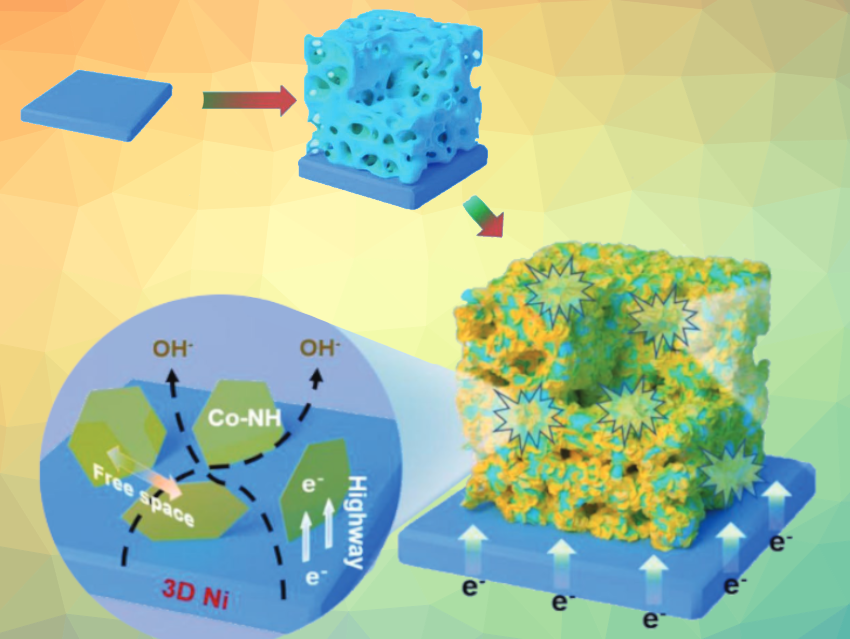The nickel hydroxide polymorph α-Ni(OH)2 is a promising cathode material for aqueous nickel-zinc batteries due to its high theoretical capacity. However, its practical use is hampered by poor stability in strongly alkaline solutions, low electrical conductivity, and slow ionic diffusion. Doping the material with elements such as cobalt could improve the stability of the phase under basic conditions and its conductivity. Using it in the form of a porous structure could speed up ion diffusion.
Xiaoyong Fan, Lei Gou, Chang’an University, Xi’an, China, Junkai Deng, Xi’an Jiaotong University, Xi’an, China, Yue Ma, Northwestern Polytechnical University, Xi’an, China, and colleagues have combined these approaches and developed a cathode material in which cobalt-doped α-Ni(OH)2 nanosheets are deposited onto a 3D porous nickel substrate (pictured). The team first prepared 3D porous nickel (pictured in light blue) by electroless plating, using hydrogen bubbles as templates. The cobalt-doped Ni(OH)2 nanosheets (pictured in green) were then grown on the 3D porous nickel structure by electrodeposition, using a solution containing Ni(NO3)2 and Co(NO3)2.
The resulting material shows a high capacity (284 mAh g−1 at 0.5 mA cm−2) with an excellent capacity retention as well as robust cycling when used in flexible batteries. According to the researchers, the work provides a simple pathway to enhancing the electrochemical performance of Ni-Zn batteries by improving ion transport and stabilizing the crystal structure of the cathode material.
- 3D Co‐Doping α‐Ni(OH)2 Nanosheets for Ultrastable, High‐Rate Ni‐Zn Battery,
Kaixin Wang, Xiaoyong Fan, Shengjie Chen, Junkai Deng, Lulu Zhang, Maosen Jing, Julong Li, Lei Gou, Donglin Li, Yue Ma,
Small 2022.
https://doi.org/10.1002/smll.202206287


